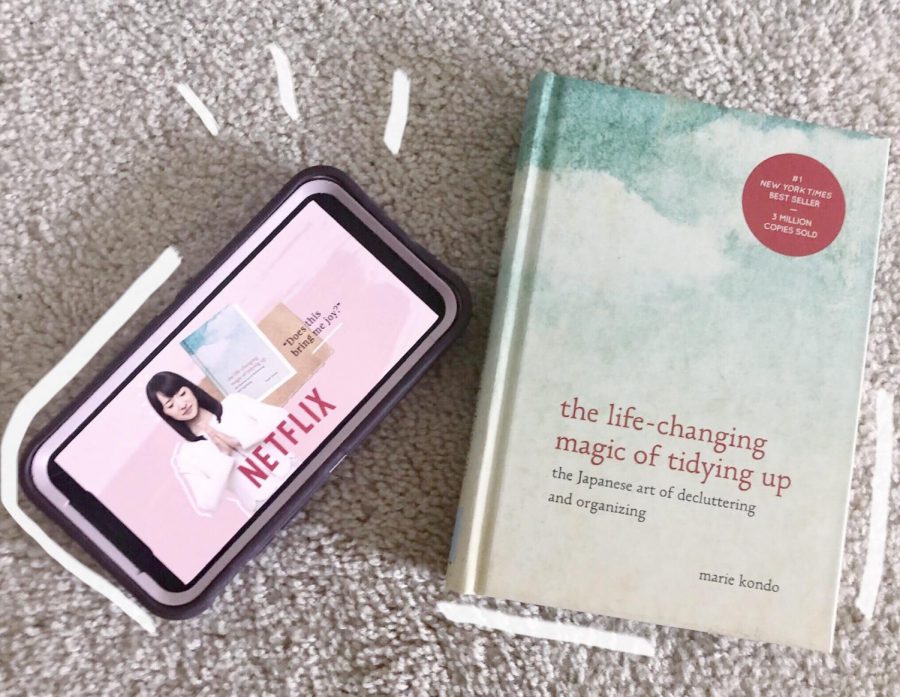Why we should listen to Marie Kondo
Creator of the “KonMari” method, Japanese cleaning expert Marie Kondo sports a new Netflix series called Tidying up with Marie Kondo after the success of her book The Life‑Changing Magic of Tidying Up and continues introducing the world to an extreme version of decluttering.
March 1, 2019
Following the release of her book The Life‑Changing Magic of Tidying Up and her new Netflix series Tidying up with Marie Kondo, the queen of cleaning, Marie Kondo came into the spotlight to show off her simple strategies to make any space peaceful.
“If you use the right method and concentrate your efforts on eliminating clutter thoroughly and completely within a short span of time, you’ll see instant results that will empower you to keep your space in order ever after,” Kondo said in her book.
In Western culture, people fail to think about if an item “sparks joy.” Marie Kondo, a Japanese woman drawing from Shintoism: a religion based on the spirit and its connection to the world both past and present, emphasizes a need for connection and spiritual uplifting in everything around a person. Objects in a person’s possession can interfere with or amplify feelings, ultimately making them beacons of good or evil. Regardless, she believes items deserve respect and thanks the items that served their purpose when deciding to discard them.
“Keep only those things that speak to your heart. Then, take the plunge and discard all the rest, ” Kondo said.
Honing in on what “sparks joy” helps the amplification of good in someone’s life, reducing stress and anxiety. Even the queen of decluttering herself, Marie Kondo suffered from a self-proclaimed “nervous breakdown,” but then began her tidying up journey, which helped lessen her anxiety by changing her lifestyle. She developed her own form of cleaning and decluttering called the “KonMari method,” which divided items people tend to collect into four categories for better cleaning: clothing, books, papers, and “komono” or miscellaneous.
Kondo recommends people declutter in a sequence, beginning with clothing first, books second, papers third, “komono” fourth, and lastly, sentimental items. Going through items in the recommended order allows the declutterer to heighten their sense of what “sparks joy.” Having a firm grip on what makes a person happy means giving away or discarding the junk and it happens without a moment of deliberation.
Searching “the KonMari method” on the Internet renders endless videos of everyday people trying their hand at tidying up. The act of organizing swept the Internet after people saw the de-stressing effects of holding onto fewer items. In her book, Kondo mentions the common assertions she receives after helping individuals through their decluttering process and one sentiment persists amongst them—their life changes.
“The lives of those who tidy thoroughly and completely, in a single shot, are without exception dramatically altered,” Kondo said.
This magical phenomenon will hopefully continue to expand and reach the people who Kondo describes as anxious, overwhelmed, or generally unhappy. Through her new book and Netflix series, this expansion might just happen thanks to the tidying up queen—Marie Kondo.







